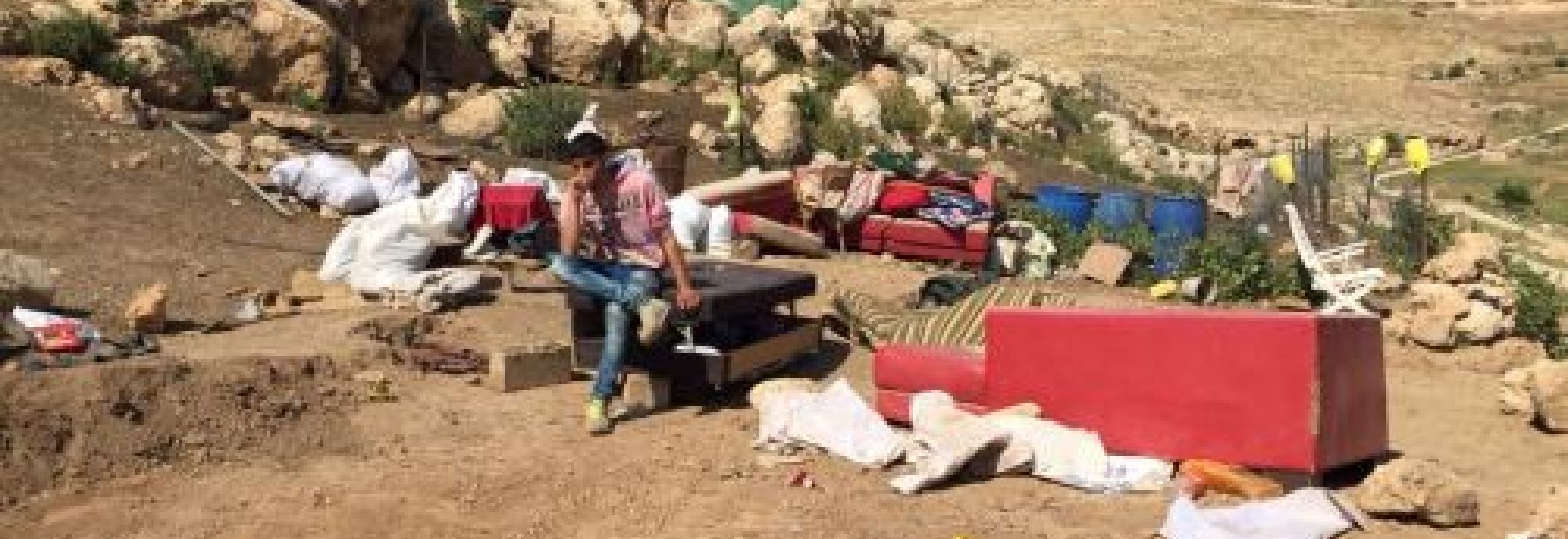
In total, 54 structures (including 18 donor-funded structures) were demolished in nine different communities, displacing 124 people, including 60 children. A further 293 people, including 98 children, were otherwise affected.
The demolitions in the five Bedouin localities in the Jerusalem governorate resulted in the demolition of 14 structures, including nine residential structures, displacing 55 people, including 31 children. All five affected communities are among the 46 Palestinian Bedouin communities in the central West Bank at-risk of forcible transfer as a result of a “relocation” plan advanced by the Israeli authorities. They are also among the communities directly affected by the E1 settlement plan, for the expansion of Ma’ale Adummim, creating a continuous built-up area between this settlement and East Jerusalem.
Multiple demolitions also took place in Khirbet Tana in the Nablus governorate, the fourth demolition recorded in the community this year. The Israeli authorities demolished 34 structures, including 13 donor-funded structures, leaving 69 Palestinians displaced, 29 of them children. Many of the demolished structures had been provided by donors as relief after earlier demolitions.
Khirbet Tana is located in an Israeli-declared military training area, or “firing zone.” Some 18 per cent of the West Bank has been closed for military training since the 1970's although recent research indicates that nearly 80 per cent of such areas are not used for training. Since the beginning of 2016, 36 structures were demolished in areas declared as firing zones, displacing 147 people, including 76 children.
Following the last demolition in the community in late March, the UN Coordinator for Humanitarian Aid and Development Activities for the occupied Palestinian territory (oPt), Robert Piper, visited Khirbet Tana and warned of a risk of forcible transfer facing residents.
Thus far in 2016, the Israeli authorities have demolished 539 structures in Palestinian communities in Area C, compared to a total of 453 in Area C in all of 2015. 804 people have been displaced in Area C in 2016, compared to a total of 580 in 2015.
